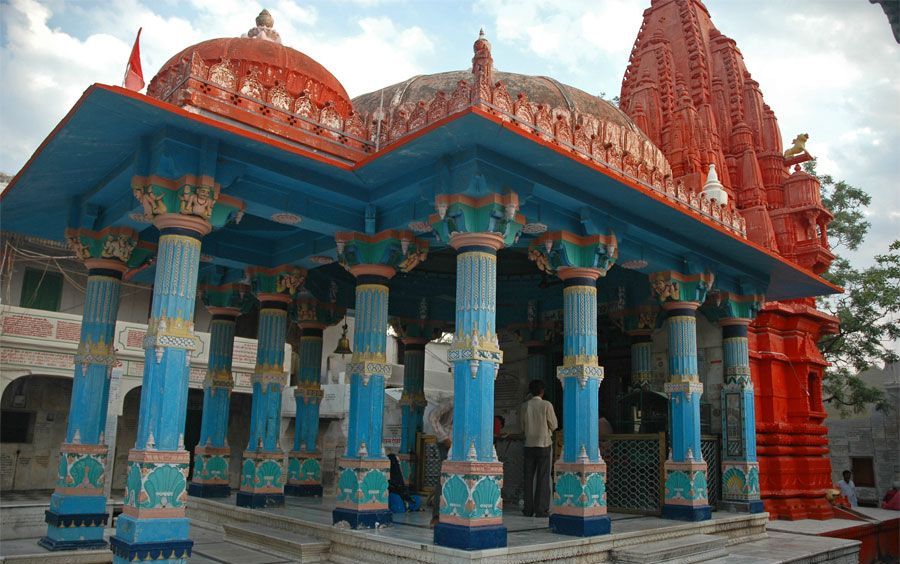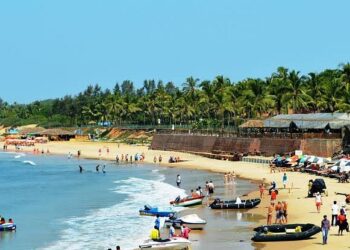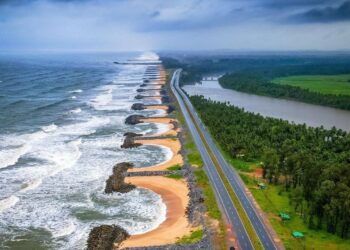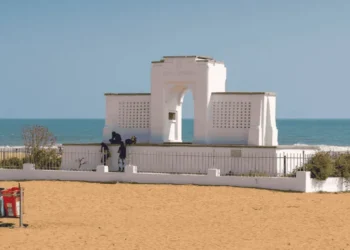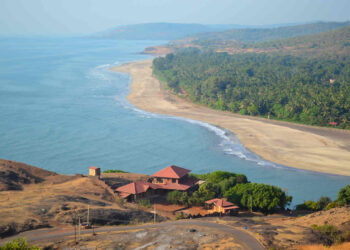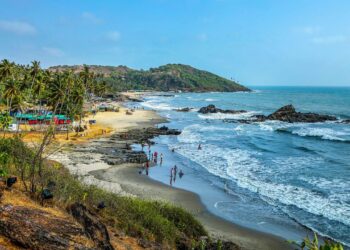The Brahma Temple in Pushkar, Rajasthan, is a rare Hindu temple for Lord Brahma, the creator god. It sits by the holy Pushkar Lake, about 10 kilometers from Ajmer, and is one of the only temples in the world for Brahma. This blog gives simple facts about the temple’s past, how it is made, why it matters for prayer, and how to visit the temple.
History of Brahma Temple
The Brahma Temple in Pushkar goes back to the 14th century, but its story starts with ancient tales. Hindu stories say Brahma picked Pushkar for a yagna, a fire ritual, by its sacred lake. His wife, Savitri, was late, so he married Gayatri, a local girl, to finish the ritual. Angry, Savitri cursed Brahma that people would only worship him in Pushkar, which is why Brahma temples are so few. Some say Sage Vishwamitra built the temple, while others point to Adi Shankaracharya in the 8th century. The temple standing now was fixed up in 1809 by Gokul Chand Parikh, a rich Hindu trader. Pushkar has long been a holy spot, named in old books like the Mahabharata and Ramayana.
How the Temple Looks
The Brahma Temple is on a high stone platform by Pushkar Lake, built in a plain North Indian style. It has a red shikhara, or spire, with a hansa (goose), Brahma’s ride, on top. The main room has a four-faced Brahma idol, carved from one piece of marble, showing the four Vedas and directions. Smaller idols of Gayatri and Savitri are nearby. The four faces stand for Brahma’s role as the creator. The temple has a mandapa, or hall, with carved stone pillars and a silver turtle on the floor, where people place coins for blessings. A small Shiva shrine is close, and the entrance has a blue arch with peacock designs, linked to Savitri. The courtyard is small, with steps to the lake for holy dips. The temple’s white marble and colorful wall paintings of gods are pretty, though some parts look worn from age and weather.
Rituals and Worship
The Brahma Temple is a top pilgrimage spot, one of five sacred dhams for Hindus. People believe praying here and bathing in Pushkar Lake can wash away sins and bring wisdom and good fortune. The temple is packed during Kartik Purnima, when the Pushkar Camel Fair happens on a full moon, and thousands take a holy dip and pray. Priests perform daily worship here, starting with the mangala aarti at sunrise and ending with the sandhya aarti at sunset. They also help devotees who want to offer special prayers. Since temples for Lord Brahma are extremely rare, this one stands out as truly special. The nearby Pushkar Lake which is believed to have formed where Brahma’s lotus fell, adds deep sacred meaning to the place.
Things to Do at Brahma Temple
Pray and Dip in the Lake: Join aartis or take a holy bath in Pushkar Lake, especially during Kartik Purnima.
Look at the Temple: See the four-faced Brahma idol, silver turtle, and carved pillars in the hall.
Visit Nearby Places: Check out Savitri Temple, 1 kilometer away on a hill, or Varaha Temple and Old Rangji Temple nearby.
See the Camel Fair: If there in October or November, go to the Pushkar Camel Fair for trade, music, and fun.
Walk in Pushkar: Visit markets for handicrafts, silver jewelry, or local sweets like malpua at street stalls.
Visiting Information for Brahma Temple
How to Get There
The temple is in Pushkar, 10 kilometers from Ajmer and 150 kilometers from Jaipur, Rajasthan.
By Plane: Jaipur International Airport, 150 kilometers away, is the closest big airport. Taxis or buses to Pushkar take 3–4 hours. Ajmer’s Kishangarh Airport, 40 kilometers away, has fewer flights.
By Train: Ajmer Junction, 10 kilometers away, has trains from Delhi, Jaipur, and Mumbai. From Ajmer, take a taxi, auto-rickshaw, or bus to Pushkar, about 20–30 minutes. Pushkar’s small station has few trains.
By Road: From Jaipur, take NH48 to Ajmer, then a state road to Pushkar, about 3–3.5 hours. Buses run from Jaipur’s Sindhi Camp or Ajmer’s bus stand to Pushkar. Taxis or auto-rickshaws can get to the temple, 500 meters from Pushkar’s main market. Parking is limited.
Temple Hours
The temple is open daily from 6:30 AM to 1:30 PM and 5:00 PM to 9:00 PM in winter, and 6:00 AM to 1:00 PM and 4:30 PM to 8:30 PM in summer. During Kartik Purnima, it may stay open longer. Ask priests about festival times.
Best Time to Go
Visit from October to March, when it’s 10–25°C, nice for travel. Kartik Purnima (October–November) is busy with the Camel Fair. Summers (April–June) are hot, up to 40°C, so go early. Rainy months (July–September) make lake steps slippery.
Rules for Visitors
Wear simple clothes: men need shirts, trousers, or dhotis and women need sarees, salwar kameez, or long dresses. Take off shoes; there’s a place to keep them. No photos are allowed in the main room. No smoking, alcohol, or non-vegetarian food is allowed, as Pushkar is vegetarian. Offer flowers or coins if you want, but it’s not required. Keep the lake clean and don’t litter.
Final Words
The Brahma Temple in Pushkar is one of the very few places where people worship Lord Brahma, the creator in Hindu tradition. Built in the 1300s and later repaired in 1809, the temple is known for its four-faced idol and its deep link to Pushkar Lake, which is believed to have formed from Brahma’s lotus. Whether you come during the famous Camel Fair or on a quiet day, this temple lets you feel the spiritual side of Pushkar and the special story that surrounds it. The temple’s white marble structure and views of nearby hills make it a peaceful spot. It’s a must-visit for anyone interested in India’s sacred heritage.
